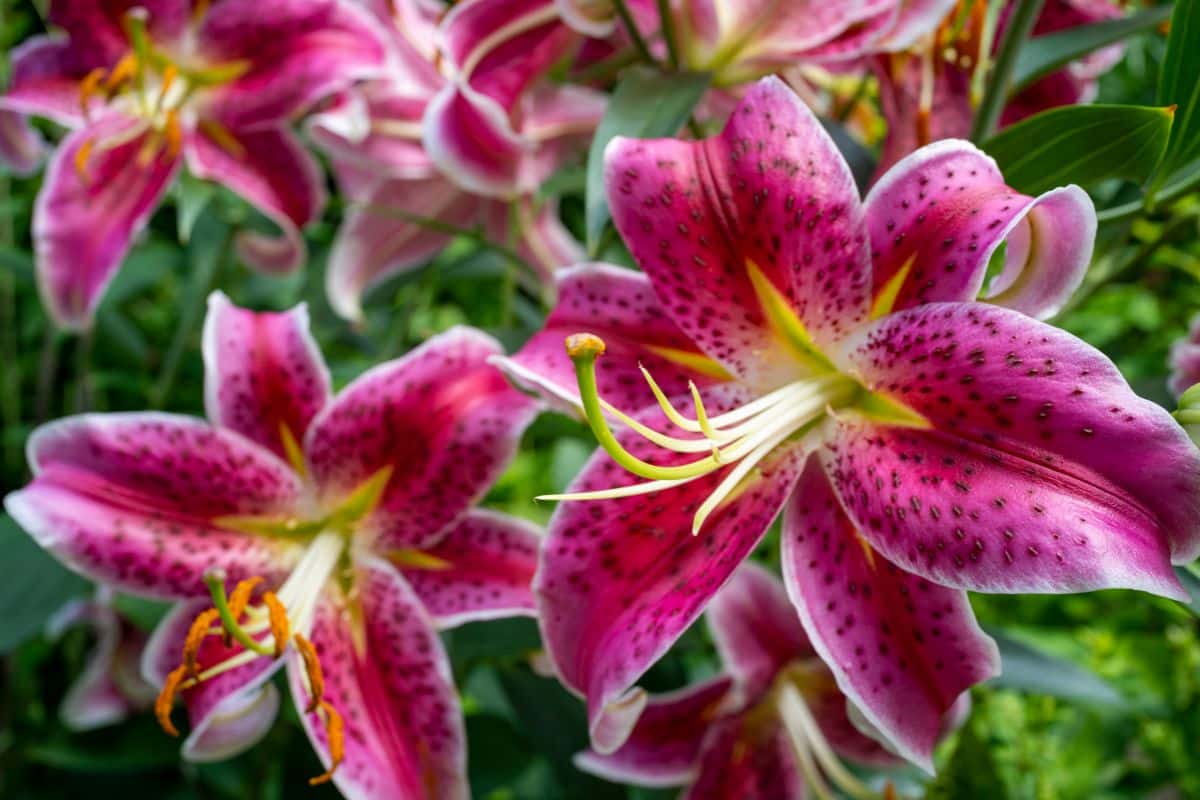Oriental lilies rank among the most spectacular flowering perennials in home gardens. Their massive blooms and intoxicating fragrance make them favorites among gardening enthusiasts worldwide. These magnificent bulbs establish themselves as reliable performers when given proper care and suitable growing conditions.
Understanding the perennial nature of oriental lilies helps gardeners plan their landscapes effectively. These bulbous plants develop extensive root systems that store energy for multiple growing seasons. Unlike annual flowers that complete their lifecycle in one year, oriental lilies invest their resources in long-term survival strategies.
Understanding oriental lily growth patterns
Oriental lilies demonstrate true perennial characteristics through their underground bulb structure. These specialized storage organs accumulate nutrients throughout the growing season, preparing for winter dormancy and subsequent spring emergence. The bulbs remain viable in the soil for many years when environmental conditions meet their specific requirements.
During their active growing period, oriental lilies produce tall stems reaching heights of three to eight feet. The plants channel energy into both flower production and bulb development. After blooming concludes, the foliage continues photosynthesis, manufacturing carbohydrates that strengthen the bulb for future seasons. This process mirrors the care requirements found in other flowering plants, such as understanding how to take care of mystique orchid indoors where proper nutrition timing proves crucial.
Temperature fluctuations trigger the lily’s dormancy cycle. As soil temperatures drop in autumn, the above-ground portions die back naturally. The bulb enters a resting phase that typically lasts through winter months. This dormancy period proves essential for flower bud formation and overall plant health. Cold exposure actually stimulates the biochemical processes necessary for robust spring growth.
Successful oriental lily cultivation requires understanding their specific environmental needs. These plants thrive in well-draining soil with consistent moisture levels. Poor drainage leads to bulb rot, effectively ending the plant’s perennial cycle prematurely. Similarly, maintaining optimal growing conditions applies to various garden plants, just as learning how to keep your basil plant alive requires attention to watering and soil quality.
Factors affecting oriental lily longevity
Several environmental and cultural factors determine whether oriental lilies return successfully each year. Soil composition plays the primary role in bulb survival rates. These lilies prefer slightly acidic soil with pH levels between 6.0 and 7.0. Heavy clay soils retain excessive moisture, creating conditions favorable to fungal diseases that destroy bulbs over winter.
Proper planting depth significantly impacts oriental lily longevity. Bulbs planted too shallowly become vulnerable to temperature extremes and mechanical damage. Conversely, excessive planting depth prevents shoots from reaching the surface effectively. The general rule involves planting bulbs at depths equal to three times their diameter, typically ranging from six to eight inches deep.
Mulching practices contribute substantially to oriental lily survival rates. Organic mulches regulate soil temperature, retain moisture, and suppress competing weeds. However, mulch should never contact the emerging shoots directly, as this creates favorable conditions for stem rot. Proper mulching techniques benefit many garden plants, similar to methods used when putting coffee grounds in your hydrangeas to boost their flowering.
Garden hygiene affects oriental lily health significantly. Removing spent flowers prevents seed production, directing energy back into bulb development. Dead-heading also reduces disease pressure by eliminating potential infection sites. Additionally, clearing away fallen foliage prevents overwintering pests and pathogens from establishing themselves in the garden bed.
Common challenges to oriental lily survival
Various pests and diseases threaten oriental lily populations in home gardens. Lily beetles represent one of the most destructive insect pests. Both adult beetles and their larvae consume foliage rapidly, weakening plants and reducing bulb vigor. Regular monitoring and prompt treatment prevent severe infestations that compromise long-term plant survival.
Viral infections pose serious threats to oriental lily longevity. Infected plants exhibit stunted growth, distorted foliage, and reduced flowering. Unfortunately, no treatments exist for viral diseases, making prevention the primary defense strategy. Purchasing bulbs from reputable suppliers and maintaining garden cleanliness reduces viral transmission risks.
Bulb rot fungi thrive in waterlogged soils, particularly during cool, wet periods. These pathogens attack the bulb’s basal plate, disrupting nutrient uptake and storage functions. Affected bulbs typically fail to emerge in spring or produce weak, yellowing shoots. Improving drainage and avoiding overhead irrigation helps prevent fungal problems.
Wildlife damage affects oriental lily survival in many regions. Deer browse on emerging shoots and flower buds, while rodents consume bulbs during winter months. Protective measures such as fencing or bulb cages provide effective solutions. Understanding garden ecosystems becomes important, as certain plant combinations can be problematic, similar to knowing about flowers you should ban from your vegetable garden to preserve crop health.
Maximizing oriental lily return rates
Strategic garden planning enhances oriental lily survival and flowering performance. Selecting appropriate planting locations provides the foundation for successful perennial establishment. These lilies prefer morning sun exposure with afternoon shade protection. Eastern-facing slopes or beds receive optimal light conditions for healthy growth and flower development.
Companion planting offers multiple benefits for oriental lily longevity. Low-growing perennials such as hostas or ferns provide natural mulching while shading the soil surface. These companion plants also create attractive garden compositions that extend seasonal interest beyond the lily blooming period. This principle applies to various garden situations, including when planning how to make an office garden where plant combinations matter significantly.
Fertilization timing influences oriental lily survival rates substantially. Early spring applications of balanced fertilizer support emerging growth, while post-bloom feeding strengthens bulbs for winter storage. Avoiding late-season nitrogen applications prevents tender growth that becomes susceptible to frost damage.
Here are essential practices for ensuring oriental lily return :
- Plant bulbs in well-draining, slightly acidic soil
- Maintain consistent moisture without waterlogging
- Apply organic mulch around plants, avoiding stem contact
- Remove spent flowers but leave foliage intact until yellowing
- Monitor for pests and diseases regularly
- Protect from deer and rodent damage
Understanding the specific care requirements for different flowering plants helps create successful garden ecosystems. Just as oriental lilies need particular attention for perennial success, other ornamental plants like understanding how to look after moth orchids requires specialized knowledge for optimal results. With proper care and suitable growing conditions, oriental lilies reliably return each year, providing gardeners with spectacular summer displays for many seasons to come.

